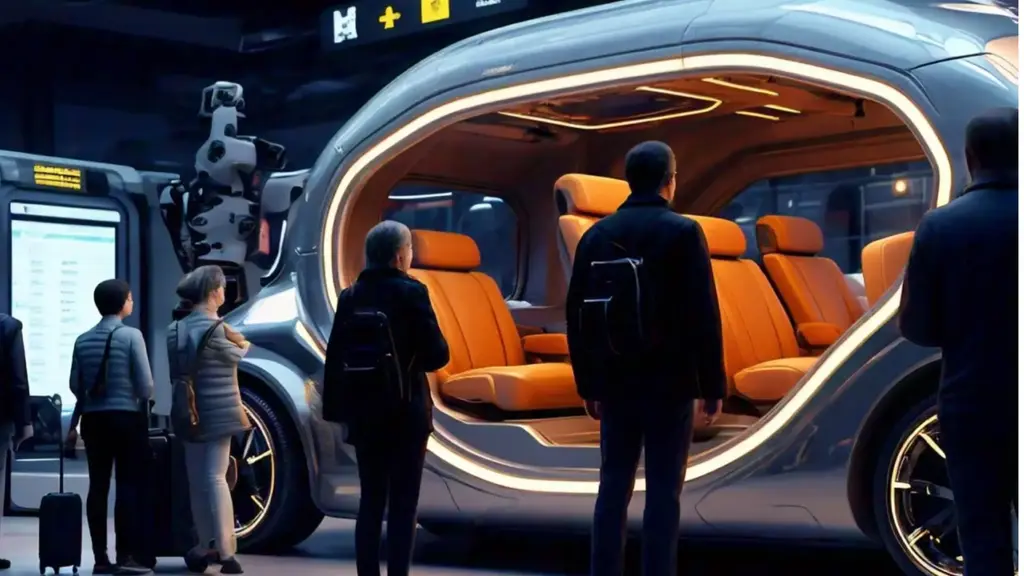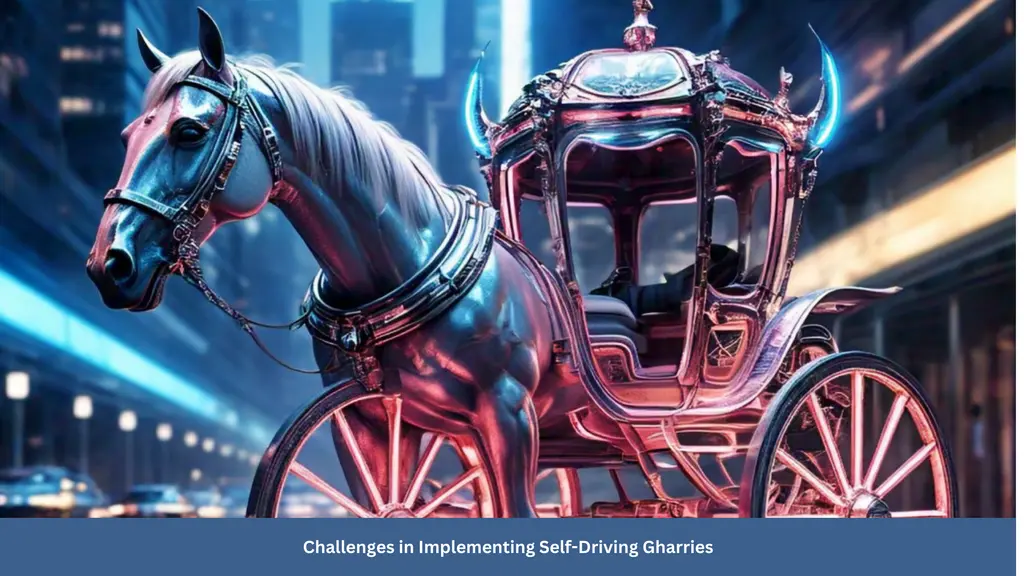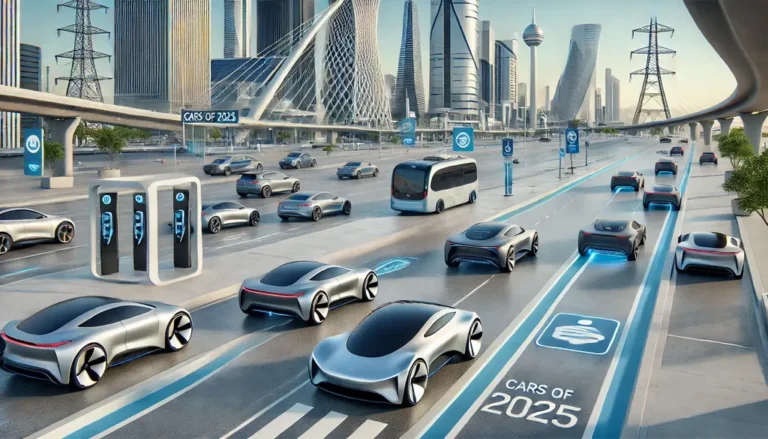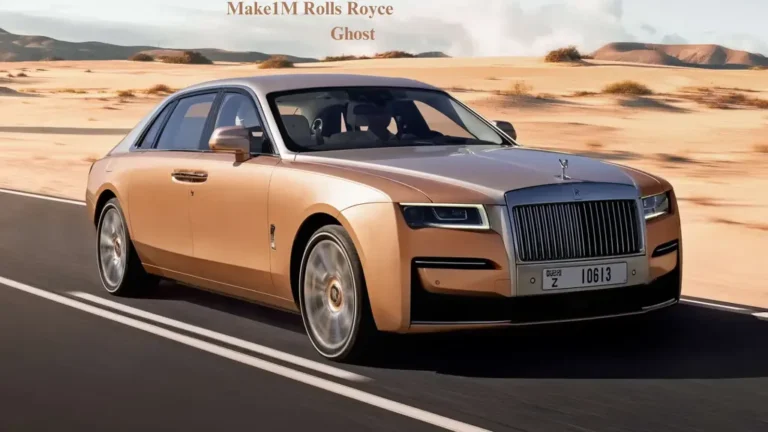Taipei Self-Driving Gharry – The Future of Transportation
Taipei is the capital of Taiwan and it is taking a big step into the future by introducing self-driving gharries. These self-driving vehicles resemble historic horse-drawn carriages and are intended to go through the streets without human drivers.
This idea presents Taipei’s desire to modernize its transportation infrastructure while preserving its cultural legacy. In this article, we will look at how these self-driving gharries work and what they mean for the future of urban transportation in Taipei.
The Concept of a Taipei Self-Driving Gharry
A gharry is a carriage drawn by horses. They are so usually associated with the older days of many cultures, especially in Asia. The classic carriages remind people of times when travel was not so stressful. Today, Taipei has transformed the old into something new by applying a modern spin to the classic mode of transport.
As discussed above, Taipei self-driving gharry is a car that puts together the traditional look of a classic carriage and modern technology. The horse-like car along with its advanced system helps determine the movements.
All of this allows the gharry to go through the streets safely while avoiding all sorts of obstacles and conditions that surround traffic.
Technological Foundation Behind Self-Driving Gharries

At the bottom of this innovation is the use of autonomous vehicle technology which enables the gharry to go through the streets without the assistance of a human driver. Here are some technologies behind this system:
Artificial Intelligence (AI)
Artificial Intelligence plays an important role in the functioning of the self-driving gharry. It analyzes data from the vehicle’s sensors and guides the gharry to make decisions on whether to turn, stop, or avoid an obstacle.
AI learns how to operate under different road conditions which increases decision-making capabilities and makes the vehicle smarter and safer over time.
Sensor Technology
Sensors are important for the gharry in order to check its surroundings and drive properly to avoid accidents. LIDAR, radar, and cameras are being used to create a point cloud 360-degree image of the environment around it.
These sensors allow a vehicle to detect pedestrians and other vehicles such that it can make split-second decisions to avoid a collision and ensure a smooth ride.
GPS and Mapping Systems
GPS technology lets the self-driving gharry know exactly where it is on the road and will follow a predetermined route. In addition, by combining this GPS data with detailed mapping systems, the vehicle is able to accurately go through complicated urban streets and intersections. The system ensures that the gharry stays on its route, changing its course when needed for efficiency and safety.
Machine Learning
With the power of machine learning, this self-driving gharry will learn to improve upon experiences and get more proficient decision-making in time. By collecting information from the different sensors placed in it, the vehicle refines its decision-making process in each step. It adapts to different scenarios and provides absolute safety under any circumstance.
Environmental and Economic Benefits of Teipei Self-Driving Gharry

The invention of this automotive technology brings many benefits and some are listed below:
Eco-Friendly Transportation
The environmental benefit of a self-driving gharry is that it runs on electricity rather than conventional fossil fuel. This means that the vehicle produces zero emissions which contributes to cleaner air and reduced pollution levels.
In a city like Taipei where air quality has become a cause for alarm, electric self-driving gharries present an environmentally friendly alternative to gas cars. They help the city reach its environmental objectives.
Lower Traffic Congestion
The use of self-driving gharries reduces the degree of traffic congestion since their routes can be optimized by avoiding known traffic in the city. Using important algorithms, the self-driving vehicle could send feedback to traffic management systems or change their speeds and alternative routes that are being adopted.
In other words, since there is reduced idling on roads due to less vehicular volume, traffic moves with less stress on infrastructure and shortens travel times.
Cost-Effectiveness
Using electricity instead of gas, self-driving gharries cut the costs of fuel when compared to other forms of transport. With no human driver involved, their running costs will be low as well. This way, transportation will be less expensive for its users because fuel and labor measures will be passed along.
Maintenance on electric self-driving vehicles is also less extensive than for conventional cars. Thus, these reduce further the expenses faced by the operators and their passengers alike.
Job Creation in Technology and Innovation
Self-driving gharries can reduce the need for traditional driving jobs but they open new opportunities in fields like technology and artificial intelligence. Skilled workers will be needed to maintain and upgrade the advanced systems in these vehicles.
New industries can emerge around the manufacturing of autonomous electric vehicles. This shift provides an opportunity for economic growth and job creation in Taipei’s growing tech sector.
Challenges in Implementing Self-Driving Gharries

The idea of a self-driving gharry sounds amazing but it’s not as easy as you think it is. Some challenges are faced by the company to implement such a system. These are:
Public Acceptance and Trust
One of the biggest hurdles that self-driving gharries face would be public acceptance. Very few people feel comfortable in an autonomous vehicle where a human driver is not sitting with them.
The solution to overcome this mistrust is strong public education with clear convincing demonstrations of safety. It also requires the delivery of real-world results of using these vehicles safely.
Legal and Regulatory Hurdles
Self-driving gharries would need changes to the local laws and regulations. It would be a fairly complicated and time-consuming work. Existing traffic laws won’t accommodate autonomous cars and there is a need to create new regulations that will deal with how they should operate.
To start with, there is the issue of who shall be blamed in case such accidents happen and generally whether they will meet basic safety standards. Going through the legal framework for these vehicles is an important challenge that requires collaboration between the government and local authorities.
Technical Challenges
Taipei’s busy streets present a unique set of challenges for self-driving gharries. Urban areas have unpredictable elements such as pedestrians and construction zones that autonomous vehicles need to understand safely.
The sensors and AI systems that the self-driving gharries would employ must be able to deal with the complexities of real-world scenarios. These are weather changes or interactions with other vehicles.
Cultural Resistance
Self-driving gharries have modern technology blended with traditional charm. However, combining these two elements can be difficult. Most locals could maybe not like to change their style, especially the horse-drawn carriages’ classic image.
There is also a danger of its being considered a threat to the cultural heritage of the locals. The successful integration of tradition and innovation requires careful planning and consideration of the community’s values.
Infrastructure and Technological Support
To make self-driving gharries work effectively, the city’s infrastructure needs to be compatible with autonomous vehicle systems. This includes high-quality roads and smart traffic management tools. The technology that supports these vehicles needs to be constantly maintained and updated to work with the advancement of AI and sensor technology.
This means that the long-term success of self-driving gharries in Taipei requires both the physical infrastructure and the technological support systems in place.
Conclusion
The introduction of Taipei self-driving gharry is a promising step toward the future of urban transportation. These self-driving vehicles have many advantages such as reduced emissions and traffic congestion. Despite the challenges of public acceptance and technological barriers, the potential for innovation and sustainability is big.
Taipei’s embrace of self-driving cars sets a good example of how contemporary technology can preserve cultural heritage while increasing urban mobility.
FAQs
What Is the Concept of Self-Driving Cars?
An autonomous vehicle is one that can sense its surroundings and operate without the need for a human driver. A human passenger does not need to take control of the vehicle or to be there at all times.
How Do Passengers Use Self-Driving Gharrys?
Passengers can reserve a self-driving gharry using a specific mobile app. Users can enjoy a convenient ride by picking pickup and drop-off locations.
How Can I Locate Charging Outlets for the Gharry?
Charging stations are located across Taipei and other major cities. Throughout your travel, the gharry’s GPS system can help you find nearby charging outlets.






